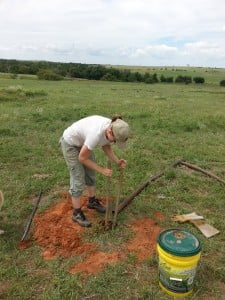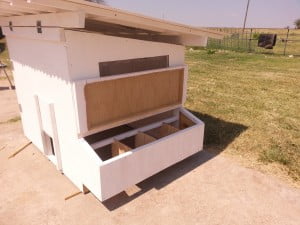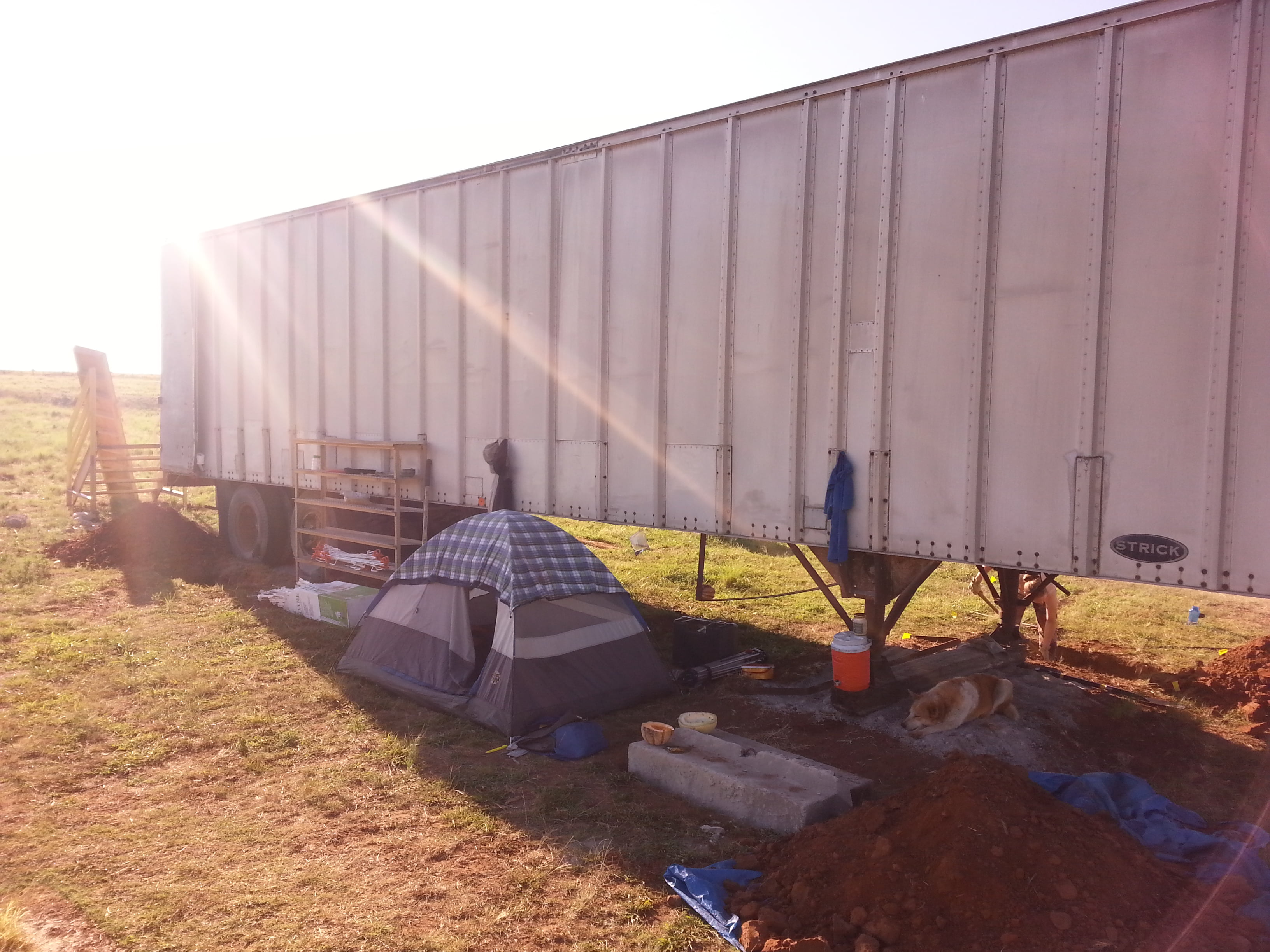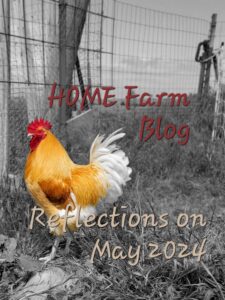A Month of Learning, Sweating, and Getting Stuff Done
The rains have slowed back to the more typical Oklahoma climate as we got down to business on the homestead. I turned 28 again this year, not 29, and learned as much about team work as an eager 8 year old. It can be frustrating and nearly defeating to work together at new things, especially when it’s 100 degrees and the nearest cloud seems to be 3 states away. Thus a valuable lesson was learned: when installing high tensile electric wires, always pull the coil from the inside out!

We installed ¼ of a mile of electric fencing on recycled PVC flexible T posts to form a perimeter around our 10 acres. The 10 acres is in a corner that is already fenced on 2 sides by barbed wire, so we only had to fence the other 2 sides. Aaron welded some old pipes to create end- posts which we put in with concrete. Post-hole diggers are quite helpful tools, as well as tricep builders! I think I have more muscle in my arms than when I carried a baby boy around all day! With no shade out there on the pasture, the only form of relief was drinking water, which was warm and seemed never to quench my thirst. I have decided that on days above 95, we must bring a cooler with ice.

On one of the hottest day of this month, we did receive some shade in the form of a 45 foot semi-trailer, placed long ways east and west so that the north side has shade almost all day. The breeze that blows under the trailer is heavenly. The dogs agree. They sleep all day under there while we work. The trailer came from a mining company who used it for storage of tools and nut and bolts. The shelves inside are an organizer’s dream, with many different sizes and spacers to accommodate numerous items. Because the windy conditions here, we’ve dug holes to place large concrete blocks into that will hold the chains, which will keep the trailer from (hopefully) blowing away. While I don’t think we’ll actually live in the trailer, we will use it for storage and relief from the elements while we build our earth-bag home.

The only thing holding us back from beginning that build is a right-of-way. Our 10 acres is landlocked from the road and we need to have permission from the adjacent land-owner to set up a road so that we can access our land without driving over the bumpy pasture every time we want to come H.O.M.E. This is a very small hurdle, compared to some other “alternative” home builders. Many people who choose to build super energy efficient and beautiful homes are located within city limits and must obtain building and zoning permits and have to make alterations to their designs in order to comply with state and county regulations. If you are planning on building anything that is out of the ordinary, make sure you check for this kind of red tape. We are very lucky not to have to deal with this!
This August we purchased some bee-feed flower mix that includes:
Lavender Hyssop (Agastache foeniculum), Rockcress (Arabis alpina), China Aster (Callistephus chinensis), Siberian Wallflower (Cheiranthus allionii), Lance-Leaved Coreopsis (Coreopsis lanceolata), Plains Coreopsis (Coreopsis tinctoria), Chinese Forget-Me-Not (Cynoglossum amabile), Purple Coneflower (Echinacea purpurea), Aspen Daisy (Erigeron speciosus), California Poppy (Eschscholzia californica), Indian Blanket (Gaillardia pulchella), Globe Gilia (Gilia capitata), Tidy Tips (Layia platyglossa), Blue Flax (Linum perenne), Sweet Alyssum (Lobularia maritima), Bergamot (Monarda fistulosa), Forget-Me-Not (Myosotis sylvatica), Baby Blue Eyes (Nemophila menziesii), Corn Poppy (Papaver rhoeas), and New England Aster (Symphyotrichum novae-angliae).
And a southern plains native grass seed mix that includes:
Blue Gama Sideouts, Grama Buffalo Grass, Plains Bristlegrass, Little Bluestem, and Prairie Junegrass.

Also this month, we built our mobile chicken coop for “chooks” that will become part of the family in September. After scouring the many breeds of chickens available to us, we decided on Dominiques, purportedly the oldest native breed in North America. The Dominique has a barred pattern, which makes it less susceptible to predators, a plus for our situation because we plan on having them out on pasture a lot. They are typically good layers even in extreme heat and cold, and are a duel-purpose breed, meaning they can also be tasty meat birds. According to the American Livestock Breeds Conservancy, they were listed as critical until the 1970’s when their popularity grew and gave them the status they are today: watched. Because so many large-scale producers favor 1 or 2 breeds, and because fewer people have home flocks than pre-WW2 times, many breeds have fallen to near extinction. We were delighted to know that we could purchase breeds that were in need of conservancy.

In the recovering status are Buff Orpingtons, a highly favored breed for home and small farms because of their loving and kind nature. In all my research, I found that these are the ideal breed for the first flock particularly for people who are finicky about birds. I have never really considered myself a bird lover, and the large beak and scratchy clawed toes make me a little nervous. So, this breed sounded like a great way to get accustomed to Gallus gallus domesticus on a personal level. Orpingtons make great mothers and lay lots of eggs throughout the year. Both of the breeds we chose have a large single comb, which makes them slightly hardier in the summer heat, as the comb is the heat-relieving strategy; the bigger the comb, the more heat that can dissipate from the bird’s body. I simply cannot wait to eat fresh eggs!

We also constructed a top bar bee hive using instructions from Philip Chandler’s The Barefoot Beekeeper. This style of bee hive is favored among the more ecologically-minded beekeepers who choose to let the bees build their own comb, rather than inserting blanks, which force the bees to use that particular size. More on that next spring, when we order bees.
This August has proven that yes, it is unbearably hot in Oklahoma, but working patiently together, we can get stuff done!








2 thoughts on “Reflections on August, 2013”
Great post Alison!
You guys are doing a fantastic job out there, hang in there! Thanks for keeping us updated back home. I really appreciate hearing the details of your homesteading efforts! Congrats on the fence, the chicken coop, and the beehive, and I look forward to hearing more next time!